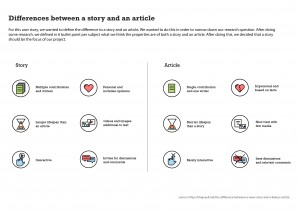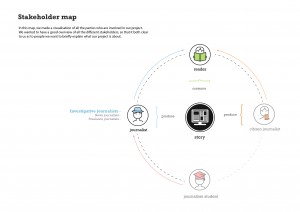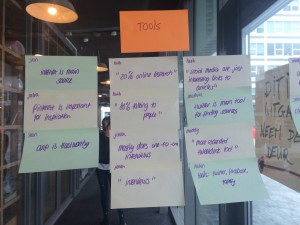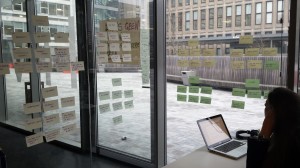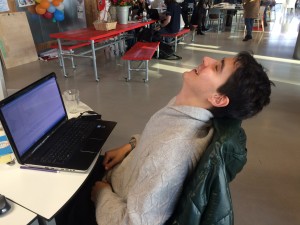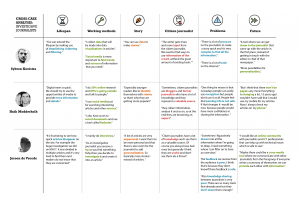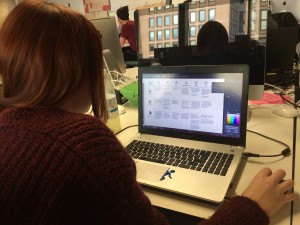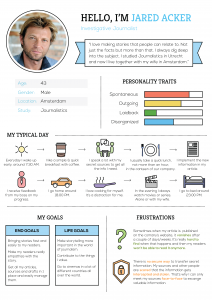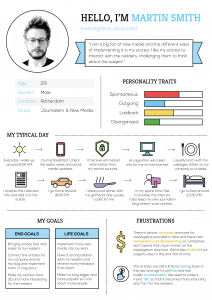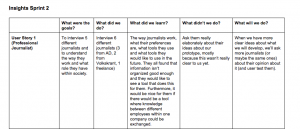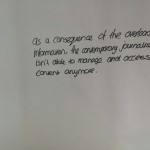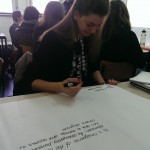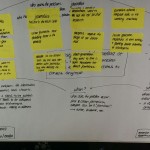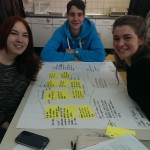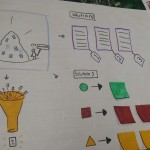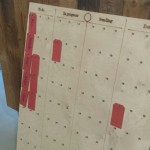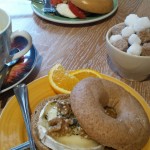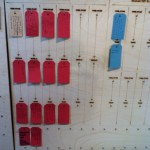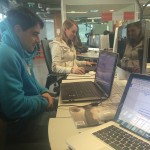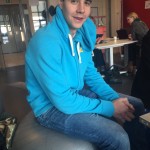The 6th week already!
16-20 March
This week went by very fast! Our team is currently in such a good flow of energy, that time flies. This monday, we started wrapping up all the user stories that were already finished. We also decided this week would be important for Javier, the programmer of our team. We agreed he would use this week to program our prototype (the interactive timeline). Since he was at a conference in Hannover last monday, he was happy to finally start doing what he’s really good at: coding! For the first time, we’ve seen Javier in his natural habitat: focussing on 0’s and 1’s practically the whole day. We helped him by feeding him tea and fruit (yeah, he’s a healthy Spanish boy who doesn’t like coffee and really likes fruit). We’re very happy to see the great progress he makes on the prototype!
On tuesday, we met Margreet again, who wasn’t there last week because she went on a holiday. We were happy to tell her the progress we made in the week before. Luckily, Miriam and Felipe provided us with some great feedback last week, so despite the fact we missed Margreet around us, the quality of our work was able to stay at the same level as before. On wednesday morning, we had a translate session with Margreet. We showed Margreet all the visualisations of the user stories that were both finished as in progress. She provided us with some great feedback, which we adapted that afternoon. An important insight was that we should always provide a visualisation with a good introduction or context, because just a visualisation of something cannot explain why something is visualised or what the motivations of it are. You can see some examples below:
Michelle and Anne also did a cross-case analysis for user story 1 and 3, which are about the interviews with both the professional journalists as the journalism students. One of the windows at MediaLAB was covered by sticky notes that day:
On Thursday, Javier spent the whole day programming. At the end of the day, he looked like this:
Michelle en Nikki did some great job in making visualizations of all the user stories. Michelle spent a lot of time on visualizing the outcomes of the cross-case analysis, about which we can say we are quite proud of!
Nikki finished the personas of both the contemporary investigative journalist as the future investigative journalist, which helps us to better understand our user. She did a great job!
Anne spent time on wrapping up all the different stories in the insights document, from which you can see a preview below:
Next week, we’ll focus on the peer pitch on Wednesday, where we’ll pitch our first prototype to our peers. On friday, we’ll have a meeting with the Persgroep again, where we will show them all the outcomes of this sprint and of course the prototype too. Also, our team has to prepare lunch on monday, so we can use our creativity on a different level than connected to the future of journalism. We’ll keep you up-to-date!







